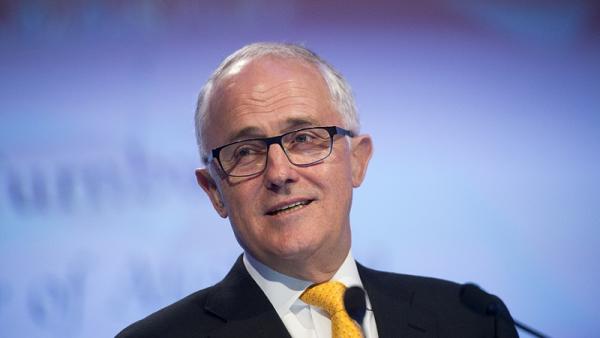
James Laurenceson, Deputy Director, Australia-China Relations Institute, University of Technology Sydney |
This article apppeared in The Australian Financial Review on June 19 2018.
With 'America first' policies so blatantly threatening Australia’s economic interests, the Turnbull government needs to move decisively to repair its fractured relationship with China.
On Tuesday the Prime Minister made a solid start telling the Australia-China Business Council in Canberra that he was 'filled with optimism' about the future of bilateral ties. When challenging issues arose, Turnbull insisted they would be worked through on the basis of 'mutual respect'.
In 2017 China bought $116 billion of Australian goods and services, up 21 percent on a year earlier, and more than our next four biggest customers combined (Japan, Korea, the US and India).
Sustaining this massive annual injection of Chinese demand, worth more than six percent of Australia’s GDP, will be vital to securing Australia’s economic prospects as the Trump administration in the US continues to undermine the global rules-based trade order upon which Australia has relied.
In 2016 both sides of US politics rejected the Trans-Pacific Partnership. This should have been seen in Canberra as a clear warning of the direction Washington was headed.
In March, Prime Minister Turnbull was reduced to thanking President Trump for eventually choosing not to impose steel and aluminium tariffs on Australia, despite the US having no right under international law to do so in the first place. The European Union, Canada, Japan and India, amongst others, didn’t manage to escape.
Last Friday the US again reached for domestic law to raise tariffs on $50 billion of imports from China.
On Tuesday President Trump instructed the US Trade Representative to find Chinese goods worth another $US200 billion for more tariffs.
A senior White House official told The Atlantic earlier this month that the Trump doctrine is simple: 'We’re America, bitch'.
Under this doctrine, the alternative to a trade war with China is a trade deal. The Financial Times reported last month this would involve China pledging to buy more US agricultural and energy goods, goods that it currently sources from countries like Australia.
The US has also been white-anting the WTO by blocking the appointment of new judges to the institution’s independent dispute resolution body. This policy began during the Obama administration and has continued under Trump.
Last November the Australian government’s foreign policy white paper declared that the 'rules embodied in the WTO limit arbitrary and unfair trade restrictions and are of fundamental importance to Australia’s interests.'
Since 2000 per-capita disposable income in Australia has risen by one-third, fuelled by rapidly rising purchasing power in China and elsewhere in the region.
The WTO, and the China-Australia Free Trade Agreement (ChAFTA) enacted in 2015, have allowed Australia to seize the opportunities on offer.
With the US turn on trade, China has emerged as a natural economic ally. At the G20 meeting in Argentina last month foreign minister Julie Bishop said that Australia and China 'were very much on the same page' and China’s concerns about economic nationalism and protectionism were 'very similar to ours'. The Prime Minister repeated this message yesterday.
But we need to get the relationship back on track to capitalise on the potential benefits this alignment brings.
After denying in April that the Australia Week in China would be cancelled this year, the Department of Foreign Affairs and Trade now concedes that the trade and investment showcase is unlikely to go ahead.
Despite ChAFTA being full of review clauses triggered after two or three years, there’s little to suggest ChAFTA 2.0 is on the horizon.
Last week a survey by KPMG and the University of Sydney revealed that only 35 percent of Chinese companies investing in Australia felt welcome, with 67 percent saying the Federal government was less supportive than previously.
Yes, China trades and invests with Australia because it’s also in China’s interests to do so.
But even achieving mutually beneficial outcomes requires close cooperation and hard work, as the 10 years it took to complete ChAFTA showed.
And yes, some of Australia’s anxiety towards China in recent years is because of China’s own actions, such as its assertiveness in the South China Sea.
But Australia is not the only US ally to have such concerns and yet no other has a China relationship in such poor shape.
For all the allegations about the Chinese government seeking to skew Australia’s democratic processes, there’s precious little evidence it has been successful.
Of course, even claimed attempts at interference such as those warned about by Australia’s security agencies should be taken seriously. But so too should other sources of expert assessment. More than 80 of Australia’s leading China scholars have now signed an open letter that concludes there is 'no evidence' that China’s actions 'aim at compromising [Australia’s] sovereignty'.
It’s time for Australia’s national interests to be asserted with the mix of pragmatism and diplomatic language that characterised Australia’s consistent engagement with China from Gough Whitlam to Tony Abbott. The age of Trump is not the time to leave the China relationship as ragged as it has become. Yesterday’s speech brings hope that Turnbull now recognises this.
Author
James Laurenceson is Deputy Director of the Australia-China Relations Institute at the University of Technology Sydney.


